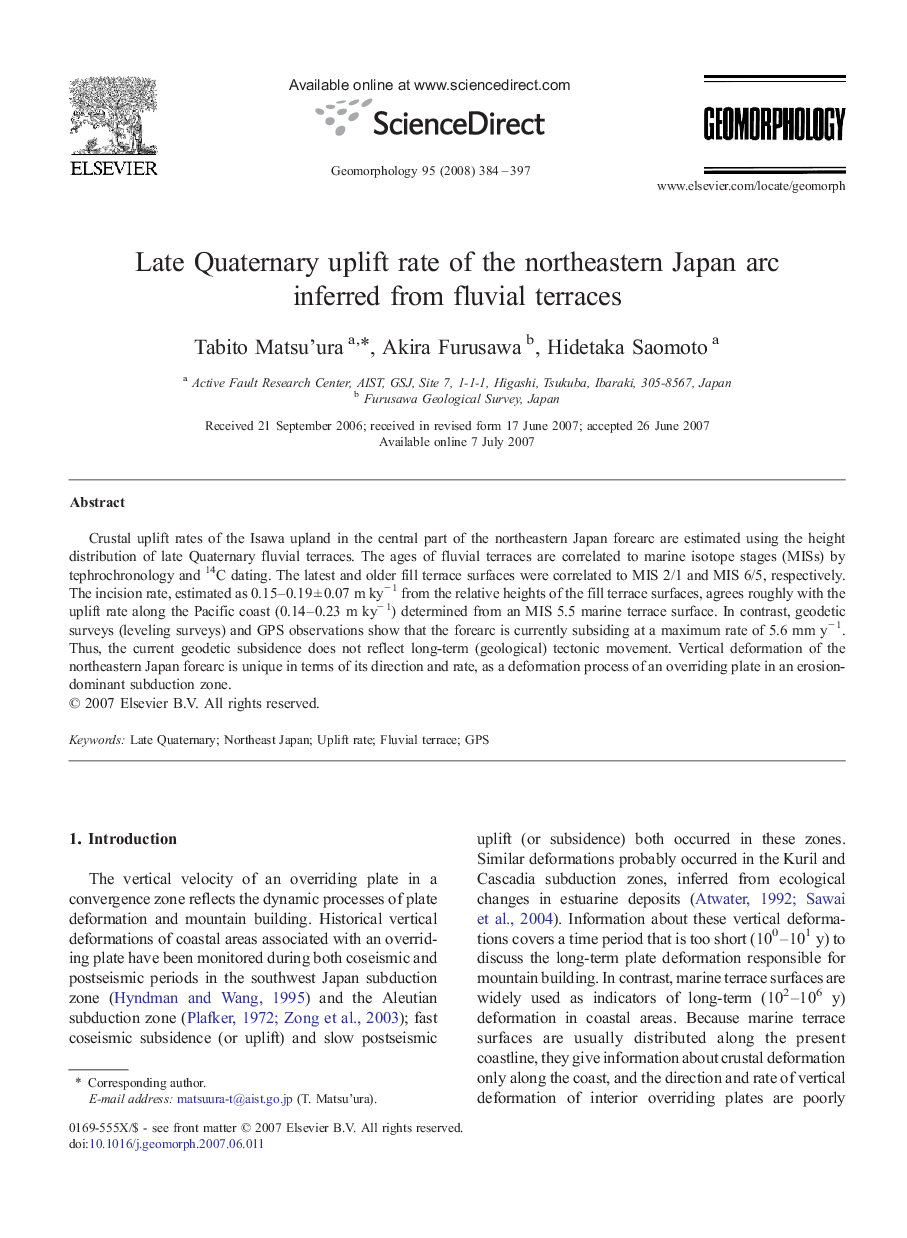| Article ID | Journal | Published Year | Pages | File Type |
|---|---|---|---|---|
| 4686873 | Geomorphology | 2008 | 14 Pages |
Crustal uplift rates of the Isawa upland in the central part of the northeastern Japan forearc are estimated using the height distribution of late Quaternary fluvial terraces. The ages of fluvial terraces are correlated to marine isotope stages (MISs) by tephrochronology and 14C dating. The latest and older fill terrace surfaces were correlated to MIS 2/1 and MIS 6/5, respectively. The incision rate, estimated as 0.15–0.19 ± 0.07 m ky− 1 from the relative heights of the fill terrace surfaces, agrees roughly with the uplift rate along the Pacific coast (0.14–0.23 m ky− 1) determined from an MIS 5.5 marine terrace surface. In contrast, geodetic surveys (leveling surveys) and GPS observations show that the forearc is currently subsiding at a maximum rate of 5.6 mm y− 1. Thus, the current geodetic subsidence does not reflect long-term (geological) tectonic movement. Vertical deformation of the northeastern Japan forearc is unique in terms of its direction and rate, as a deformation process of an overriding plate in an erosion-dominant subduction zone.
